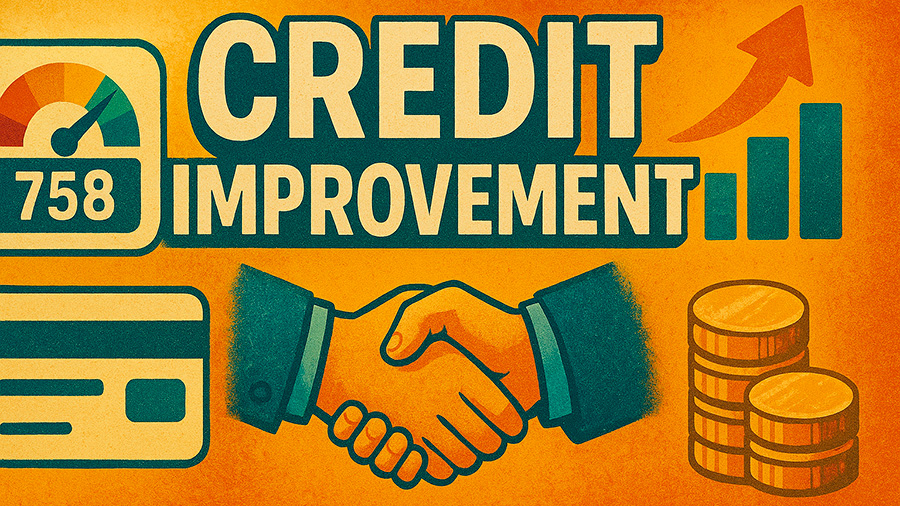Recovering Financial Strength: The Real Path Toward a Better Credit Future

Credit is more than just a number—it’s the foundation of financial opportunity. Whether you’re applying for a mortgage, a car loan, or even a rental apartment, your credit score often determines the kind of opportunities available to you. But what happens when that number drops? The good news is that no score is permanent. With discipline, patience, and the right strategy, credit improvement is not only possible—it’s inevitable for those willing to put in the effort. Understanding how credit works and what influences it is the first step toward regaining financial freedom.
What Causes Credit to Decline?
Before exploring how to fix credit, it’s essential to understand what damages it in the first place. Many people assume it’s just about missing payments, but the truth is broader. Late payments, maxed-out credit cards, too many loan applications, or defaulted debts all play a part. Even closing old accounts can unintentionally hurt your score by shortening your credit history.
Most credit scoring systems—like FICO or VantageScore—analyze five main factors. Recognizing how each factor contributes gives you a roadmap for credit improvement and helps you avoid repeating mistakes.
| Credit Factor | Weight in Score | What to Focus On |
|---|---|---|
| Payment History | 35% | Always pay bills on time |
| Credit Utilization | 30% | Keep balances under 30% of your limits |
| Length of Credit History | 15% | Keep old accounts open if possible |
| Credit Mix | 10% | Diversify between credit cards and installment loans |
| New Credit Inquiries | 10% | Avoid too many new applications |
Understanding these elements helps you create a solid plan for credit improvement—addressing each category methodically instead of focusing only on one or two.
Step One: Evaluate Where You Stand
You can’t fix what you don’t know. Start by reviewing your credit reports from the three major bureaus—Equifax, Experian, and TransUnion. Federal law allows you to request a free copy from each once a year at AnnualCreditReport.com. Check carefully for errors such as incorrect payment dates, outdated accounts, or debts you don’t recognize. Even small inaccuracies can weigh down your score. Disputing these items can sometimes lead to a quick boost, making it one of the easiest initial steps in credit improvement.
Step Two: Address Outstanding Debts
Once you’ve assessed your credit report, it’s time to deal with what’s dragging you down. Prioritize debts that are past due or in collections. Contact creditors directly and ask if they’re willing to settle for a reduced amount or remove negative marks after payment (often called “pay-for-delete”). Not every creditor agrees, but it’s always worth negotiating. Paying down balances—especially on credit cards—can significantly improve your credit utilization ratio, one of the most important factors in any credit improvement effort.
Debt Reduction Impact on Credit Utilization
| Credit Limit | Current Balance | Utilization Rate | Effect on Score |
|---|---|---|---|
| $5,000 | $4,500 | 90% | High utilization, strong negative effect |
| $5,000 | $2,000 | 40% | Moderate utilization, some recovery |
| $5,000 | $1,000 | 20% | Optimal range for credit improvement |
Reducing your utilization ratio below 30% is one of the fastest ways to improve credit. If you can manage to keep it under 10%, you’ll likely see noticeable progress within a few months.
Step Three: Build Positive Credit Activity
Rebuilding isn’t just about paying off debts—it’s about creating new, positive data for lenders to see. This is where responsible borrowing becomes essential. Consider the following methods:
- Secured Credit Card: A secured card requires a small deposit that serves as your credit limit. Use it for small, regular purchases and pay it off in full every month.
- Credit Builder Loan: Offered by some community banks or credit unions, these small loans help you demonstrate reliable repayment behavior while saving money.
- Authorized User Status: If a trusted friend or family member adds you to their credit card account, you can benefit from their positive history (as long as they pay on time).
All these tools help establish a pattern of reliability—the cornerstone of credit improvement.

Step Four: Consistency Over Time
The credit system rewards consistency, not quick fixes. Most negative marks lose their power after about two years of positive activity, even if they remain on your report longer. This means that paying bills on time, reducing balances, and maintaining low utilization will eventually outweigh past mistakes. Set reminders, automate payments, and track progress through apps or free credit monitoring services. Staying disciplined for six to twelve months can yield results that last for years.
Common Mistakes That Slow Progress
Even the most motivated individuals sometimes fall into traps that stall their efforts. Avoid these common pitfalls during your credit improvement journey:
- Closing old accounts too soon. Older credit lines strengthen your average account age, a key factor in your score.
- Applying for multiple credit cards at once. Each application triggers a “hard inquiry,” temporarily lowering your score.
- Ignoring small collections. Even unpaid medical or utility bills can appear on your report and affect your score.
- Relying on third-party “credit repair” services. Many charge high fees for actions you can do yourself for free.
Avoiding these mistakes can make the difference between slow recovery and steady progress.
Real Example: From Poor to Strong Credit
Take Marcus, for instance. Two years ago, he had a credit score of 520 after losing his job and falling behind on several loans. He began his credit improvement plan by paying off small collections first, opening a secured credit card, and setting up automatic payments. Within one year, his score rose to 640. Today, he’s at 715 and qualified for a low-interest car loan. His story proves that no financial setback is permanent with consistent effort and smart habits.
How Long Credit Improvement Takes
Rebuilding credit is a process, not an event. The timeline depends on how severe the damage is, but most people notice improvement within three to six months of consistent positive actions. For those recovering from bankruptcy or major defaults, it may take 12 to 24 months to see substantial results. The key is to stay patient and focus on what you can control: payments, balances, and responsible borrowing.
Technology That Can Help
Today, managing credit is easier than ever. Many apps and services provide real-time credit tracking, spending analysis, and payment reminders. Tools like Credit Karma, Experian Boost, and Mint allow users to track progress and spot problems before they escalate. Some even allow you to link rent and utility payments to your credit profile, turning everyday bills into opportunities for credit improvement.
Why Credit Improvement Matters Beyond Loans
Improving your credit isn’t just about borrowing money—it affects your entire financial life. Employers, landlords, and insurance providers often review credit reports when making decisions. A higher score can lead to better rental terms, job opportunities, and even lower insurance premiums. It also brings peace of mind, giving you confidence that you can handle unexpected expenses or emergencies responsibly.
